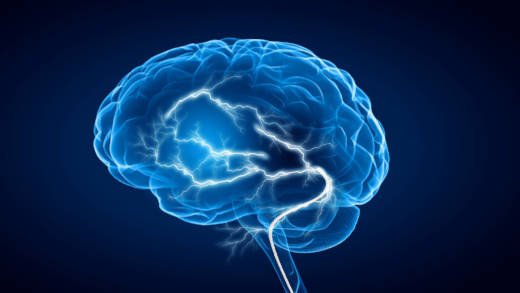Other experts said the results were far less than advertised.
“We’re a long way from ‘Clockwork Orange,’” said Dr. Paul Appelbaum, director of the Division of Law, Ethics, and Psychiatry at Columbia University’s Vagelos College of Physicians and Surgeons.
For the study, the Penn researchers randomly assigned 81 healthy adults (the average ago was 20) to receive “transcranial direct-current stimulation” of the dorsolateral prefrontal cortex, behind the top of the forehead, for 20 minutes via two scalp electrodes, or to get a low current for 30 seconds and then nothing, also via electrodes. Participants couldn’t tell if they were receiving the stimulation or not.
The researchers aimed at the dorsolateral prefrontal cortex because dozens of small neuro-imaging studies have reported that in people deemed antisocial or aggressive or both, this region is typically smaller and less active than in other people. Such studies can’t tell whether an impaired prefrontal cortex causes aggression or vice versa, so the Penn study, a registered clinical trial, tried to figure that out.
The next day, participants read one vignette about the beer-bottle assault and one about the rape, and rated how likely they were (from “no chance” to “definitely”) to act as the assaulter did. The brain-stimulated group reported a 47 percent lower likelihood that they would commit the non-sexual physical assault (1.15 vs. 2.19 on a scale of 0 to 10) and a 70 percent lower likelihood of committing the sexual assault (0.26 vs. 0.86) compared with the control group. The brain-stimulated group also rated the assaults as more morally wrong than the control group did.
But while the brain stimulation decreased people’s self-reported likelihood of committing assault, their actions indicated otherwise. In the only assessment of actual behavior, the participants got to stick pins into a computer image of a doll representing a close friend, a common lab test of violent tendencies. Those whose prefrontal cortex was stimulated stuck in slightly more pins than the control group.
“What people say they will do with regard to violence and what they actually do may be two different things,” said Appelbaum. “Whether actual violence would be reduced [by brain stimulation] is unknown,” but “the data suggest no impact” on actual aggressive behavior.
Olivia Choy, the paper’s lead author and now a psychologist at Nanyang Technological University in Singapore, emphasized that the participants got only one 20-minute stimulation session. “It might be that repeated sessions over a longer time period could produce changes in behavior, but changes in behavior start with changing intent,” she said.
“We’re trying to find benign biological interventions [for criminal violence] that society will accept,” Penn psychologist Adrian Raine, who has studied the brain basis of violence and psychopathy for decades, said in a statement. “Transcranial direct-current stimulation is minimal risk. This isn’t a frontal lobotomy.”
Robin Mackenzie, a scholar of medical law and ethics at England’s University of Kent, called the study “promising and suggestive,” saying it “advances the field of biological interventions on antisocial and aggressive behavior.”
But she, too, noted several concerns. One is that the brain-stimulated group had 24 women and 15 men, compared with 21 and 21 in the control group. That raises the question of whether the zapped group’s lower likelihood of endorsing rape and beer-bottle attacks might be driven by gender differences, especially on what constitutes rape, Mackenzie said: “Asking female participants to identify with a rapist to assess how likely they would be to rape a woman is inherently different from asking male participants to do so….It is at the very least possible that the gender distribution could have skewed the results.”
In addition, the study participants had no history of psychiatric or neurologic disease or injury, all of which are associated with violent tendencies. But the brain mechanisms causing that violence in these groups may differ from the mechanisms in normal people. Results on healthy, non-violent college students therefore might not apply to people with such brain abnormalities. “How far tDCS could affect [such people] is an open question,” Mackenzie said.
And even if stimulation of the prefrontal cortex makes people express a heightened sense that violence is wrong, when they are asked their views the next day, it remains to be seen whether any such effect would last, or if people would have to be zapped frequently.
Regardless of its shortcomings, the study worries some experts. If governments adopt brain zapping for violent offenders, would it be voluntary or, just as some states and countries mandate chemical castration for some male sex offenders, mandatory? And would governments be tempted to extend its use beyond violence, such as “to induce passivity in politically unruly groups?,” Appelbaum asked.
“Neurotechnologies which affect identity, ways of being, and thought processes are particularly tempting for authorities seeking to secure control and cut costs,” Mackenzie said.
This story was originally published by STAT, an online publication of Boston Globe Media that covers health, medicine, and scientific discovery.

